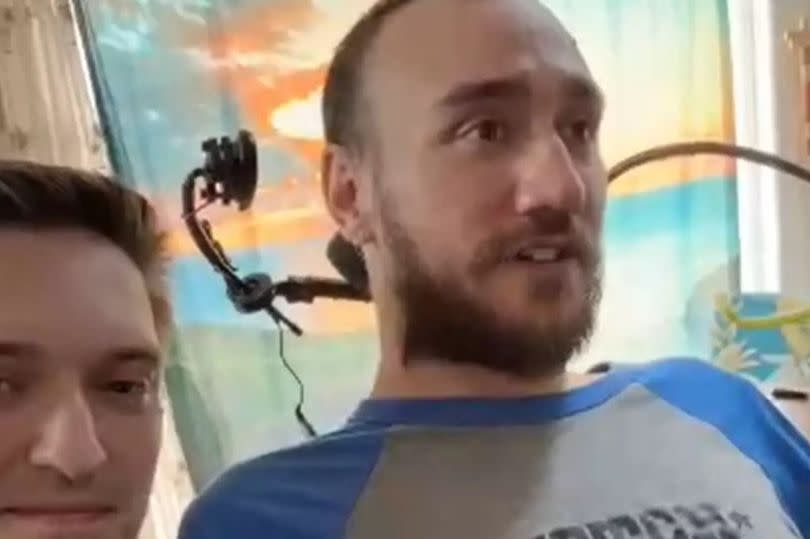'I'm first human to get Elon Musk's Neuralink – it's already broken and can be hacked'

The first person to be fitted with Elon Musk's controversial Neuralink brain-computer interface has admitted the system could be hacked or misused.
Noland Arbaugh, 29, was left paralysed from the neck down following a diving accident at a Christian youth camp in June 2016. He volunteered for the experimental procedure which involved a computer-controlled "sewing machine" implanting electrodes directly into his brain tissue.
The operation, which only required local anaesthetic, doesn't even necessitate an overnight hospital stay, according to Neuralink boss Elon Musk.
Noland says he's not actually that worried about the danger of being hacked, telling Joe Rogan: "At this point, at least hacking, [the Neuralink interface] wouldn't really do much."
He added: "You might be able to see some of the brain signals, you might be see some of the data that Link's collecting and then you might be able to control my cursor on my screen and make me look at weird stuff but that's about it.", reports the Daily Star.
Noland and the Neuralink programmers "taught" the system how to interpret his thoughts. He claims that moving a cursor onscreen by merely thinking about moving his hand is actually quicker than someone physically moving a mouse.
He explained: "The signal is already being sent before you move your hand your mind is saying 'OK, he's about to move his hand,' so the signal needs to be sent all the way down and back up in order for you to move your hand. So the speed that all of that happens [with Neuralink] is almost a little preemptive."

As soon as the system was operational, Norland, an avid chess player, challenged his computer to a game, leading Musk to laud the human-to-machine interaction as "telepathy."
Signals can not only be sent from the brain to the computer, but in the opposite direction too. Neuralink recently shared a video of a pig fitted with a prototype version of the device, demonstrating how engineers could manipulate the animal's legs via a computer.
"This is just the beginning," Norland stated. "The pig is lifting its leg up unconsciously."
He conceded that when use of the system becomes more widespread, someone will inevitably attempt to misuse it. "Propaganda will take new leaps and bounds," he added.
However, Norland remains hopeful that checks and balances will be implemented before Elon Musk's cyborg system becomes widespread. "Hopefully by that point they will regulate it," he continued.
"But as we've seen with things like AI art they're even trying to catch up with that. They're saying 'Oh, we should have thought about this before all this was released'."
Another issue that needs to be addressed is the question of after-sales service. Some 85% of the electrodes in Norland's brain have already become detached, and so the system is not quite working to its full capacity.
He's hopeful that he will receive an upgraded interface at some point in the future. He added: "They're going to have to test to see if the surgery to replace a Neuralink is safe at some point... so they're going to have to do it on people who already have it in. I imagine that sort of study might be something I would be involved in."

 Yahoo News
Yahoo News 
